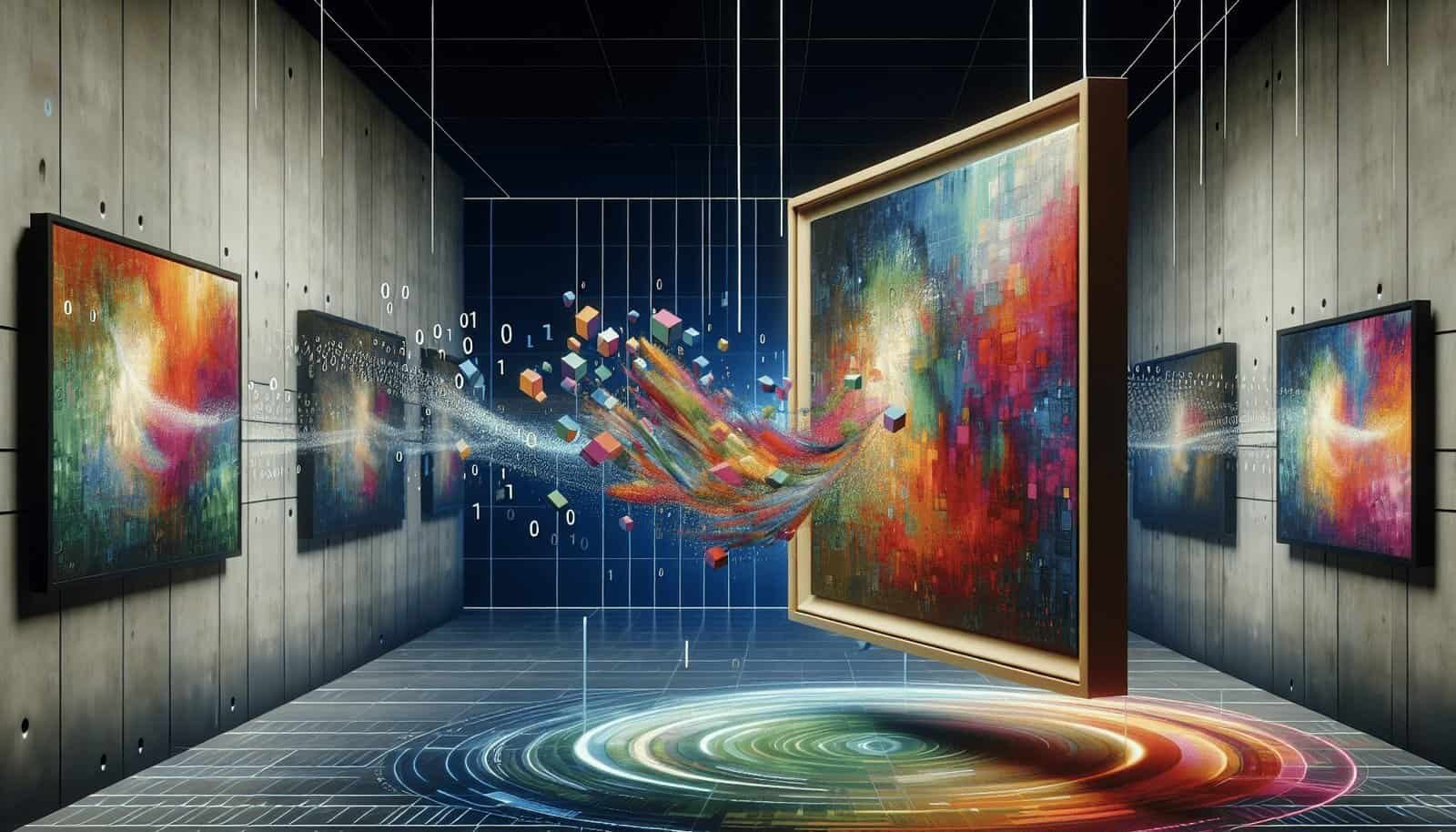Have you ever wondered what Non-Fungible Tokens (NFTs) are, or even why they’ve gained so much attention lately? It’s a fascinating world, the realm of digital assets, where what seems intangible becomes something uniquely valuable. Understanding NFTs can feel like learning a new language, but don’t worry; it’s easier than you might think!
What Exactly Are Non-Fungible Tokens (NFTs)?
To put it simply, NFTs are digital assets that represent ownership of unique items. They’re part of the Ethereum blockchain, a type of digital ledger that’s well-known for supporting various crypto technologies. The non-fungible part means that each token holds distinct information differentiating it from others, making it unique and not interchangeable.
Fungible vs. Non-Fungible
The concept of fungibility helps in understanding NFTs better. Fungible items are things that are interchangeable. For example, one dollar can be swapped for another dollar; they are identical in value and use. Cryptocurrencies like Bitcoin also fall into this category because one Bitcoin is equivalent to another Bitcoin.
In contrast, non-fungible items are not interchangeable. They possess individual characteristics that make them unique, like a piece of art or a plot of land. When it comes to digital assets, this uniqueness allows them to serve different purposes and applications.
The Backbone: Blockchain Technology
NFTs exist on a blockchain, and it’s essential to understand what that means. Blockchain is a secure, decentralized way of recording information that makes alterations difficult without collective consensus. This technology ensures that the ownership of NFTs is transparent and tamper-resistant.
How Blockchains Support NFTs
On a blockchain, an NFT can be thought of as a certificate of authenticity and ownership. When you purchase an NFT, a unique piece of data is added to the blockchain containing a reference to your item. Since this data is decentralized, meaning it’s spread across many nodes or computers, it’s extremely secure. This decentralized nature ensures that once an NFT is created, it cannot be counterfeited or manipulated, making the recorded transactions and ownership valid and trustworthy.

Common Use Cases for NFTs
Now that you know what NFTs are, you might be curious about what people use them for. The possibilities are vast, but some common applications include digital art, collectibles, gaming, and virtual real estate.
Digital Art
Digital art has become one of the most popular uses of NFTs. Artists can tokenize their artworks, meaning they can create a unique identifier for each piece and then sell these digital assets. It allows artists to monetize their work directly while retaining the provenance and royalties when the art is sold again.
Collectibles
Collectibles are another popular arena for NFTs. Think of digital trading cards, unique comic book characters, or any digital item that can become a collectible. Since each NFT is unique, the rarity can increase its value over time, much like physical collectibles.
Gaming
In the gaming industry, NFTs are being used to represent in-game assets such as swords, costumes, or entire characters. Players own these assets outside the game, enabling them to be traded, sold, or used in other games if the developers allow. This interoperability gives players more control and ownership over their gaming experience.
Virtual Real Estate
Virtual worlds are gaining traction, and with them, virtual real estate. Through NFTs, you can own land or property in digital spaces. This concept extends to virtual shopping malls, galleries, or events, where digital ownership equates to virtual influence and presence.
Why NFTs Hold Value
You might wonder why these digital assets hold any value to begin with. The reasons are as varied as their applications.
Rarity and Scarcity
Much like physical collectibles, NFTs can be valuable due to their scarcity. An NFT is unique, and especially sought-after tokens can be quite rare, driving up their market value. Creators can limit the number of identical NFTs, increasing demand by controlling supply.
Provenance and Ownership
Because of blockchain technology, the provenance or history of the NFT is clear and verifiable. Buyers can trace the previous ownerships and verify authenticity easily, adding a layer of trust and security to every transaction.
Creator Royalties
NFTs are programmed with smart contracts, enabling creators to receive royalties whenever their NFTs are sold to another user. This is a pivotal shift from traditional art sales where the original creator might not benefit from the increased value of their work.
Digital Economy Expansion
Value also comes from the broader expansion of the digital economy. As more systems integrate and accept NFTs, their utility and, consequently, their value might increase. This intertwining with digital infrastructure ensures NFTs aren’t merely a fad but a foundational element of the future internet.

Pros and Cons of NFTs
Like any technology, NFTs come with their own set of advantages and disadvantages that are essential to consider.
Advantages
- Ownership and Control: NFTs give you ownership of digital items, allowing you to sell or trade them as you wish.
- Verification of Authenticity: The blockchain guarantees that each NFT is genuine and ownership is transparent.
- Market Accessibility: Artists and creators can directly enter the market without intermediaries, expanding creative possibilities and economic access.
- Innovative Uses: NFTs open new possibilities in various fields like gaming, art, music, and real estate.
Disadvantages
- Environmental Concerns: Blockchain technologies, including NFTs, consume significant energy, leading to environmental criticisms.
- Volatility and Speculation: NFT markets can be highly speculative, with values fluctuating drastically.
- Complexity: The technology behind NFTs can be complex and challenging for newcomers to understand.
- Lack of Regulation: Being decentralized, NFT markets lack consistent regulation, which can lead to scams or unreliable sellers.
How to Obtain NFTs
Ready to try your hand at owning an NFT? Let’s look at how you can enter the market.
Setting Up a Wallet
First, you’ll need a cryptocurrency wallet that supports Ethereum, as most NFTs operate on this blockchain. Some popular choices include MetaMask, Rainbow Wallet, and Trust Wallet. These wallets store your cryptocurrencies and NFTs securely.
Choosing a Marketplace
Next, you need a platform where NFTs are bought and sold. Some of the most popular NFT marketplaces are OpenSea, Rarible, and Foundation. Each offers a variety of digital assets, from art to gaming tokens, for you to explore.
Browsing and Purchasing
Once you’ve set up your wallet and chosen a marketplace, you can browse through available NFTs. When you find something you like, you can purchase it using cryptocurrency. It’s as straightforward as buying something from an online store, though it’s always good to be cautious and do a bit of research before finalizing any purchase.

Future of NFTs
The trajectory of NFTs appears to point towards increasing integration into everyday digital life. Let’s see what the future might hold.
Broader Adoption
As technology evolves, NFTs could become a standard method for owning and trading digital assets. Various industries, including entertainment, fashion, and media, may further adopt NFTs to enhance consumer engagement and business models.
Interoperability Improvements
Future technological advancements might lead to greater interoperability, allowing NFTs to move seamlessly between different ecosystems or platforms. This could enhance their functionality and value.
Increased Environmental Solutions
With growing criticism about blockchain’s environmental impact, there’s potential for greener solutions. Innovations such as proofs of stake or hybrid systems could reduce energy consumption, making NFTs more sustainable.
Enhanced Security Protocols
The continuous evolution of blockchain technology is likely to create more robust security protocols, further safeguarding NFT transactions and ownership.
Conclusion
With their unique characteristics and applications, NFTs have shown that they’re more than just digital trends. They represent a shift towards innovative ways of owning and trading value digitally, supported by secure blockchain technology. Whether it’s digital art, blockchain games, or virtual real estate, NFTs are a cornerstone of the digital economy that’s redefining how we perceive ownership. While they bring exciting opportunities, staying informed and cautious in this rapidly evolving domain is key.
NFTs are set to play a significant role in the digital landscape, continuously shaping how you interact with and value digital assets in innovative ways. Are you ready to step into this intriguing world?
